Abstract
Aeromonas has recently been recognized as an important enteropathogen. In faecal specimens the organism is readily identified and differentiated from coliforms by the positive oxidase reaction. However, few media have proved useful for foods and environmental specimens. Bile salts brilliant green starch agar (BBGS) was studied for this purpose by testing artificially contaminated foods as well as natural potential sources. The results indicate the suitability of the medium for the isolation of Aeromonas from foods and from environmental sources.
Full text
PDF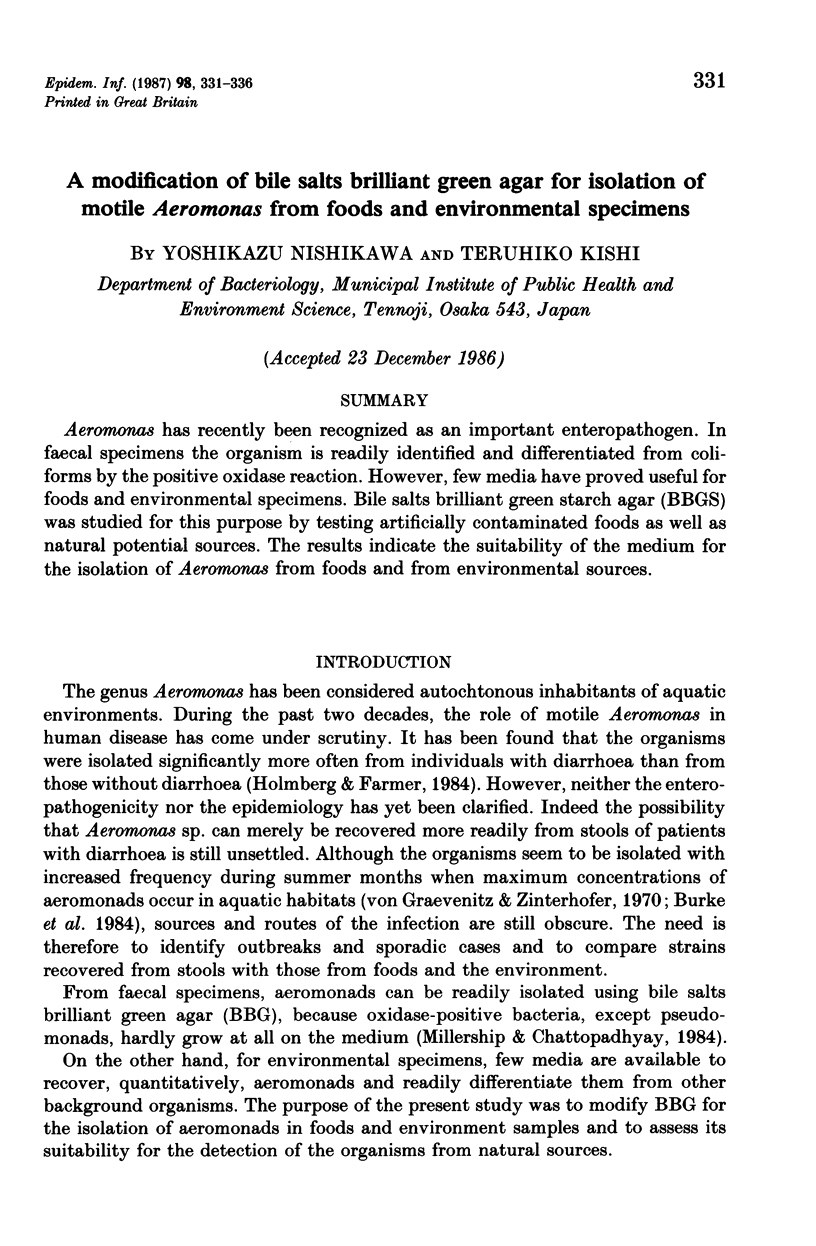
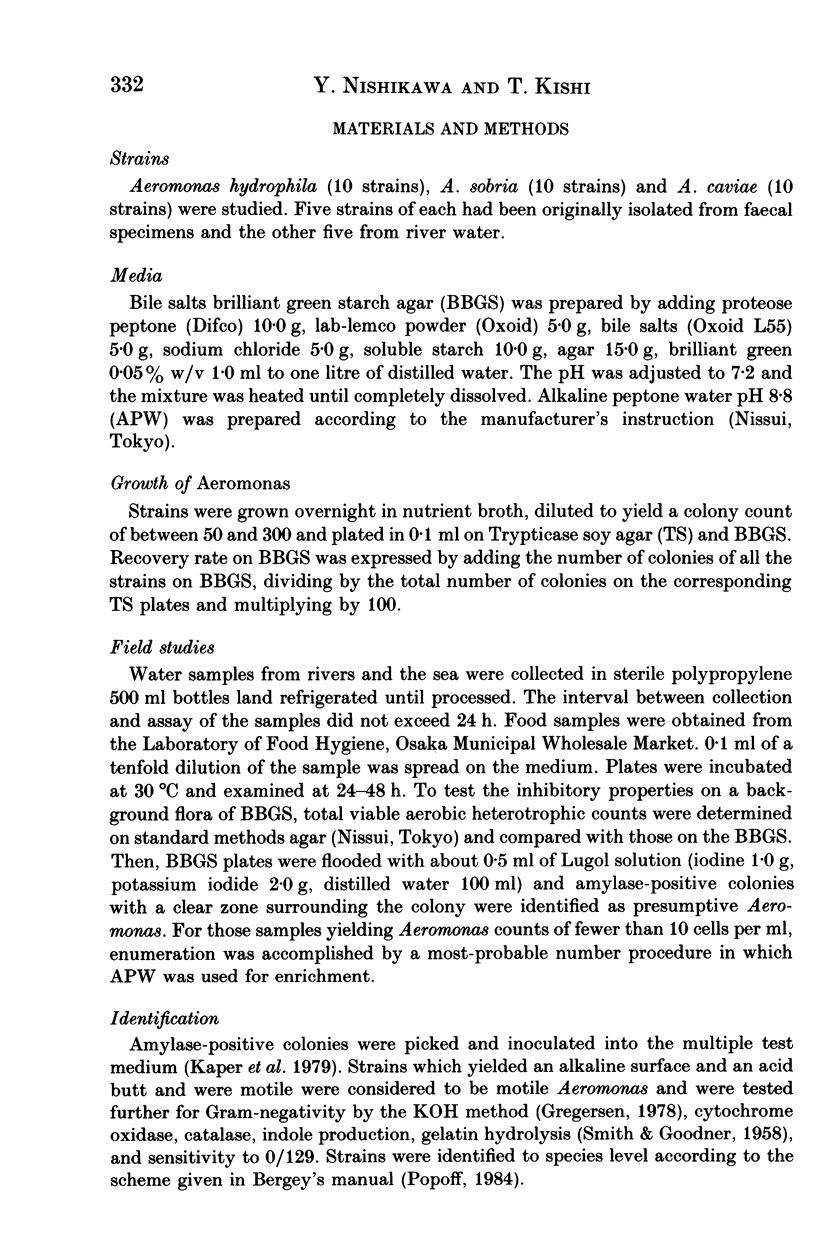
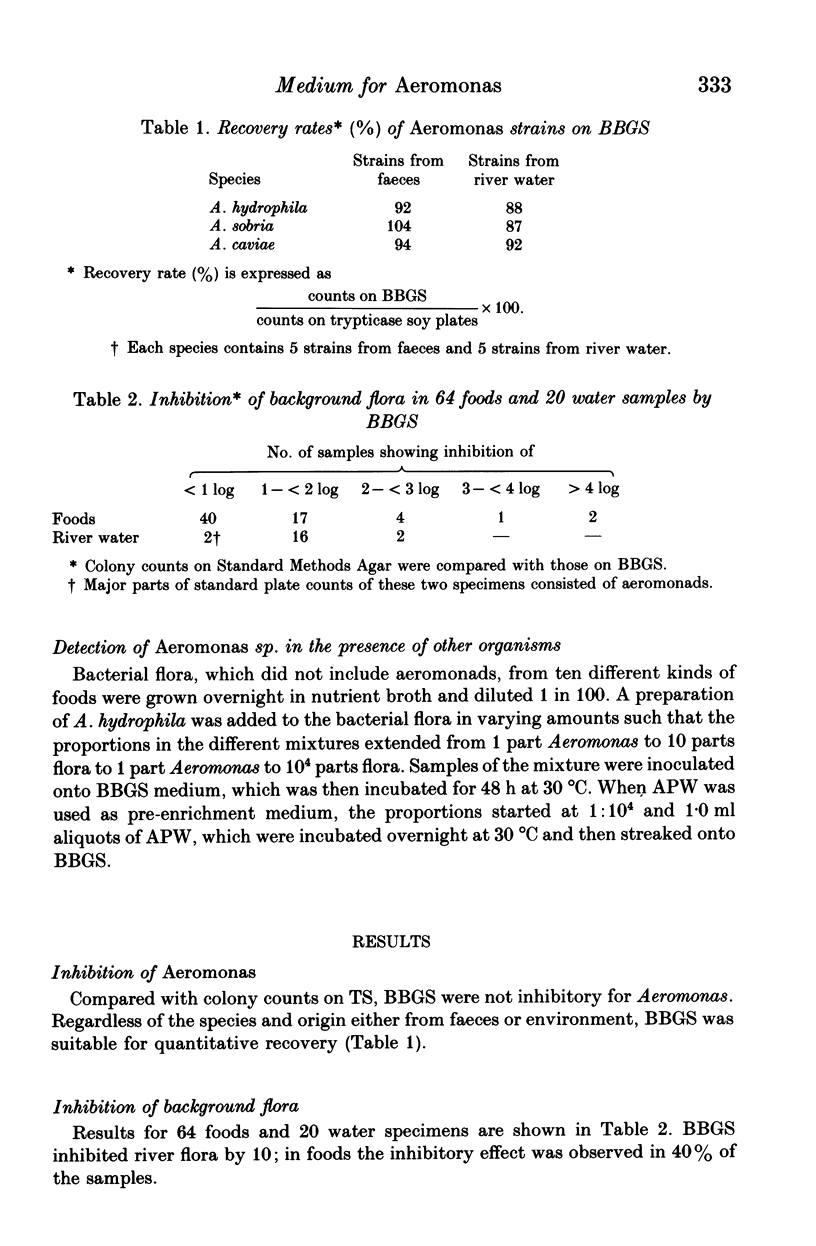
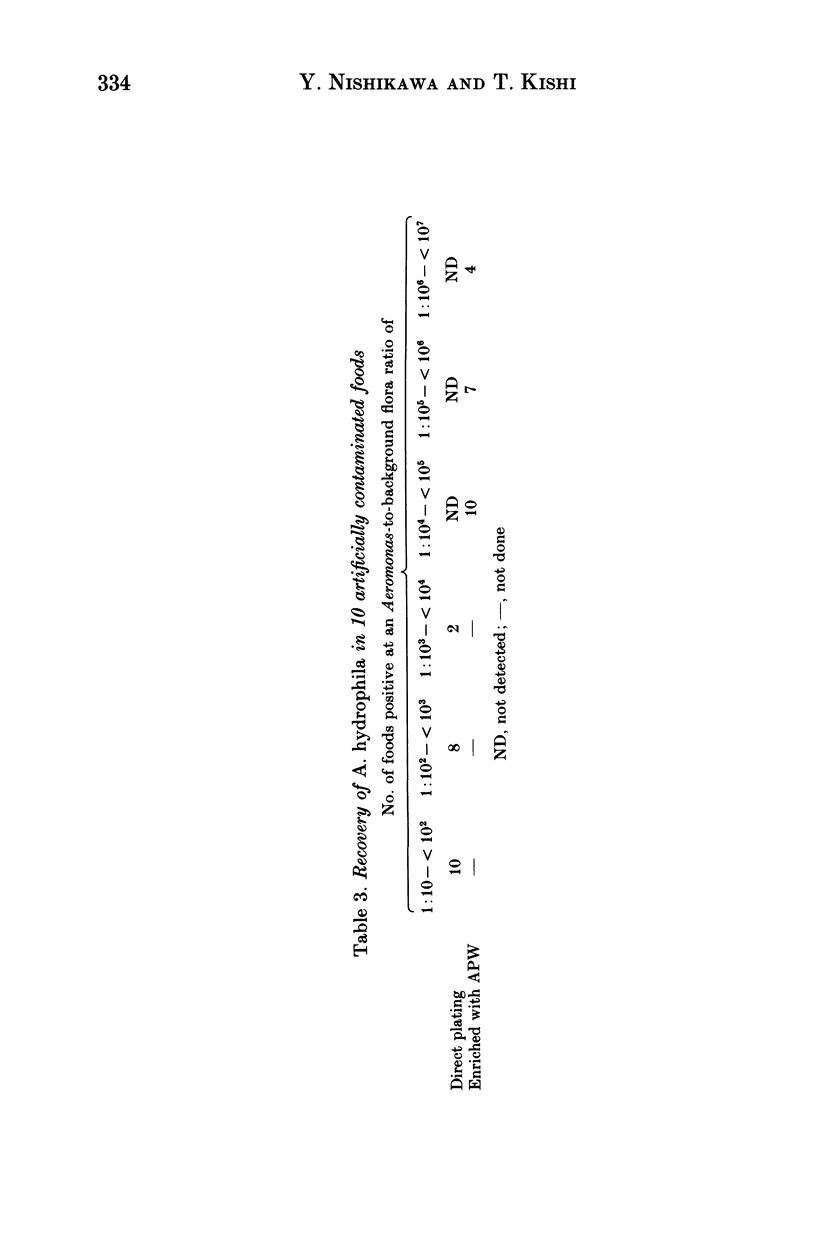
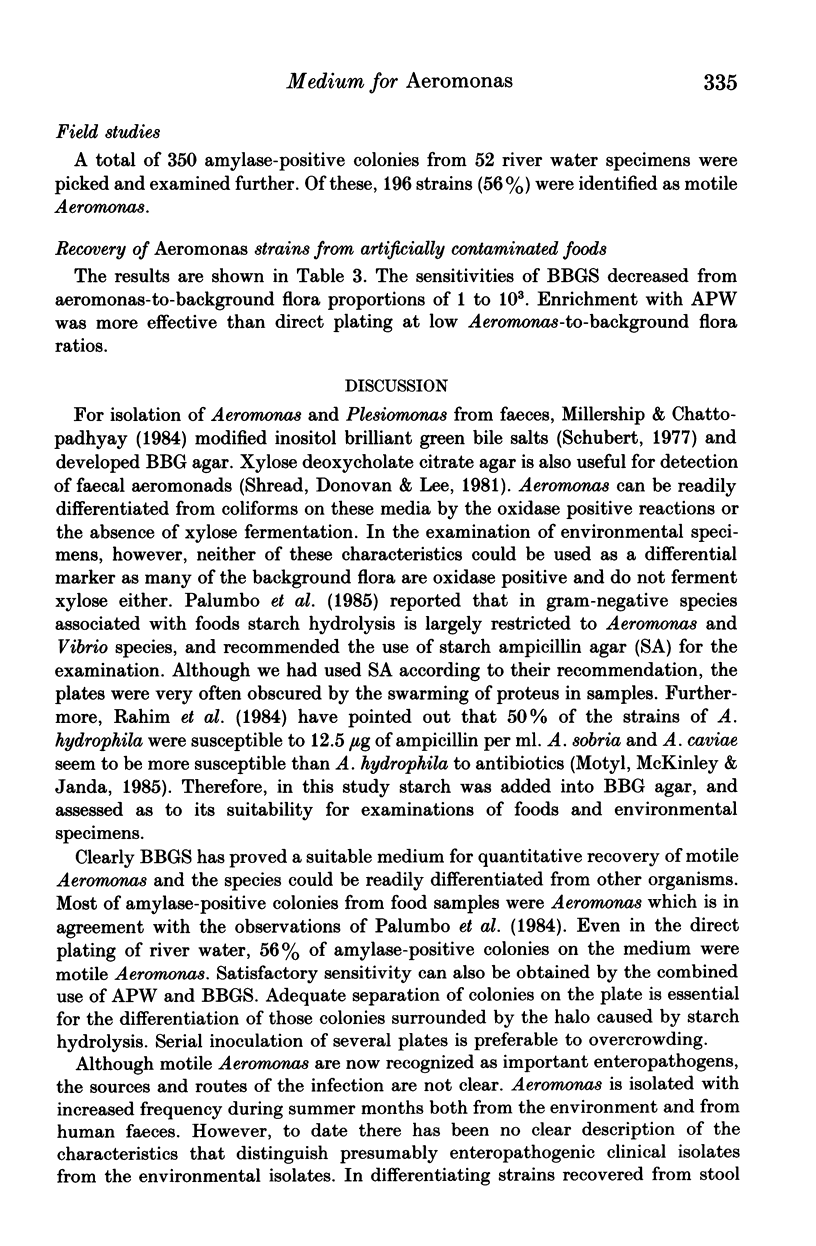
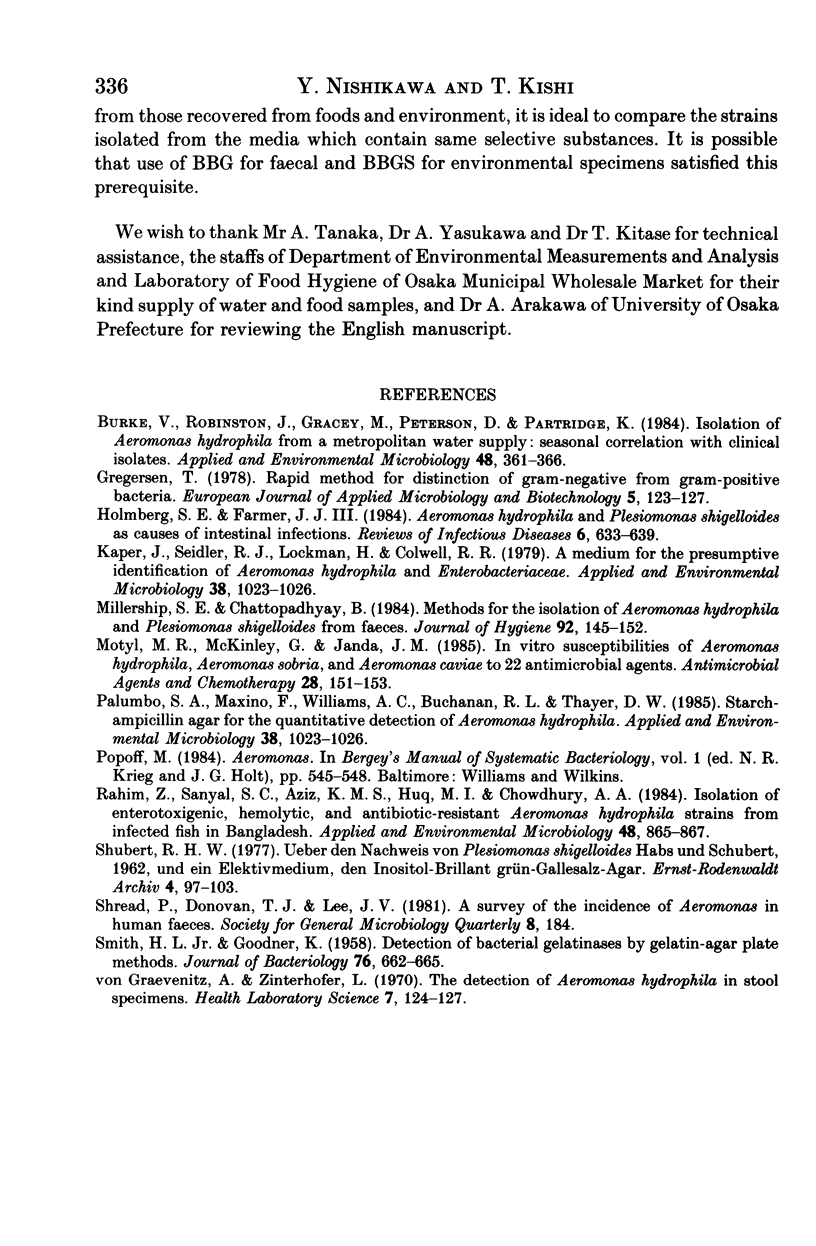
Selected References
These references are in PubMed. This may not be the complete list of references from this article.
- Burke V., Robinson J., Gracey M., Peterson D., Partridge K. Isolation of Aeromonas hydrophila from a metropolitan water supply: seasonal correlation with clinical isolates. Appl Environ Microbiol. 1984 Aug;48(2):361–366. doi: 10.1128/aem.48.2.361-366.1984. [DOI] [PMC free article] [PubMed] [Google Scholar]
- Holmberg S. D., Farmer J. J., 3rd Aeromonas hydrophila and Plesiomonas shigelloides as causes of intestinal infections. Rev Infect Dis. 1984 Sep-Oct;6(5):633–639. doi: 10.1093/clinids/6.5.633. [DOI] [PubMed] [Google Scholar]
- Kaper J., Seidler R. J., Lockman H., Colwell R. R. Medium for the presumptive identification of Aeromonas hydrophila and Enterobacteriaceae. Appl Environ Microbiol. 1979 Nov;38(5):1023–1026. doi: 10.1128/aem.38.5.1023-1026.1979. [DOI] [PMC free article] [PubMed] [Google Scholar]
- Millership S. E., Chattopadhyay B. Methods for the isolation of Aeromonas hydrophila and Plesiomonas shigelloides from faeces. J Hyg (Lond) 1984 Apr;92(2):145–152. doi: 10.1017/s0022172400064159. [DOI] [PMC free article] [PubMed] [Google Scholar]
- Motyl M. R., McKinley G., Janda J. M. In vitro susceptibilities of Aeromonas hydrophila, Aeromonas sobria, and Aeromonas caviae to 22 antimicrobial agents. Antimicrob Agents Chemother. 1985 Jul;28(1):151–153. doi: 10.1128/aac.28.1.151. [DOI] [PMC free article] [PubMed] [Google Scholar]
- Rahim Z., Sanyal S. C., Aziz K. M., Huq M. I., Chowdhury A. A. Isolation of enterotoxigenic, hemolytic, and antibiotic-resistant Aeromonas hydrophila strains from infected fish in Bangladesh. Appl Environ Microbiol. 1984 Oct;48(4):865–867. doi: 10.1128/aem.48.4.865-867.1984. [DOI] [PMC free article] [PubMed] [Google Scholar]
- SMITH H. L., Jr, GOODNER K. Detection of bacterial gelatinases by gelatin-agar plate methods. J Bacteriol. 1958 Dec;76(6):662–665. doi: 10.1128/jb.76.6.662-665.1958. [DOI] [PMC free article] [PubMed] [Google Scholar]
- von Graevenitz A., Zinterhofer L. The detection of Aeromonas hydrophila in stool specimens. Health Lab Sci. 1970 Jul;7(3):124–127. [PubMed] [Google Scholar]


